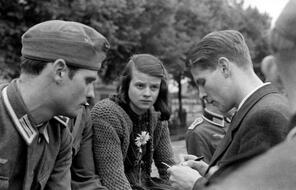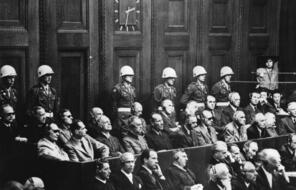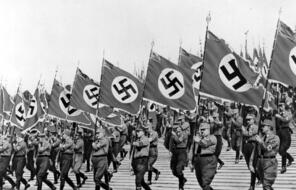Protests in Germany (Abridged)
At a Glance
Language
English — USSubject
- History
- The Holocaust
By 1942, people living in Germany were increasingly aware of the mass murders in places to the east.
Some of the first Germans to speak out against Nazi injustices were a group of students at the University of Munich. In winter 1942, Hans Scholl, his sister Sophie, and their friend Christoph Probst formed a small group known as the White Rose. Hans, a former member of the Hitler Youth, had been a soldier on the eastern front, where he witnessed the mistreatment of Jews and learned about deportations. In 1942 and 1943, the White Rose published four leaflets condemning Nazism. The first leaflet stated the group’s purpose: the overthrow of the Nazi government. In the second leaflet, the group confronted the mass murders of Jews:
We do not want to discuss here the question of the Jews, nor do we want in this leaflet to compose a defense or apology. No, only by way of example do we want to cite the fact that since the conquest of Poland three hundred thousand Jews have been murdered in this country in the most bestial way. Here we see the most frightful crime against human dignity, a crime that is unparalleled in the whole of history. For Jews, too, are human beings—no matter what position we take with respect to the Jewish question—and a crime of this dimension has been perpetrated against human beings. 1
In February 1943, the Nazis arrested the Scholls and Probst and brought them to trial. All three were found guilty and were guillotined that same day. Soon afterward, others in the group were also tried, convicted, and beheaded.
In March 1943, German author Friedrich Reck-Malleczewen wrote in his diary:
The Scholls are the first in Germany to have had the courage to witness for the truth. . . . On their gravestones let these words be carved, and let this entire people, which has lived in deepest degradation these last ten years, blush when it reads them: . . . “He who knows how to die can never be enslaved.” We will all of us, someday, have to make a pilgrimage to their graves, and stand before them, ashamed. 2
Although the Nazis were able to destroy the White Rose by executing its members, they could not keep its message from being heard. Helmuth von Moltke, a German aristocrat, smuggled the group’s leaflets to friends in neutral countries. They, in turn, sent them to the Allies, who made thousands of copies and then dropped them over German cities. As a lawyer who worked for the German Intelligence Service, von Moltke had been aware of the murders for some time but had taken no action. By late October, he was asking, “May I know this and yet sit at my table in my heated flat and have tea? Don’t I thereby become guilty too?” 3
- 1“The Second Leaflet,” The White Rose Society, accessed May 24, 2016.
- 2Friedrich Reck-Malleczewen, Diary of a Man in Despair, trans. Paul Rubens (New York: Collier Books, 1970), 179–81.
- 3Helmuth James von Moltke, Letters to Freya, 1939–1945, ed. and trans. Beate Ruhm von Oppen (New York: Knopf, 1990), 175.












